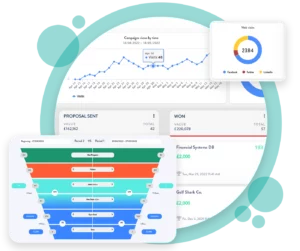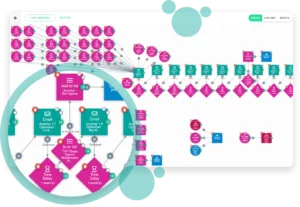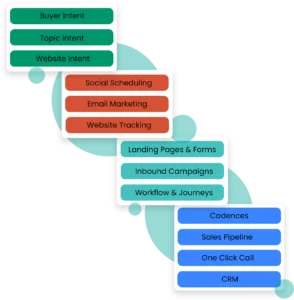The key to success in any business is effective communication and collaboration between departments.
However, in many organisations, departments operate in silos, which can lead to infighting and a singular focus on departmental goals rather than company objectives.
55% of organisations work in silos, creating misalignment both internally and externally.
Go-To-Market (GTM) teams are no exception. In fact, GTM silos are common and can have a negative impact on revenue growth.
In this blog post, we’ll discuss 5 tips on how to break down GTM Silos and drive revenue growth.
1. Determine One Source of Truth
A single source of truth is a concept used to help businesses align their strategies and budgets to one universal truth. Generally, you need your data to flow into one system where you can critically assess it without bias or restrictions.
Instead of fighting over priorities and budget allocation, teams can look at their single source of truth and build business strategies without bias or inaccurate data skewing results. For example, some teams might look at MQL metrics and paint one picture with them, while another team might consider them vanity metrics.
The trick to getting a single source of truth is to find one data point that all teams agree is a trusted and reliable source.

2. Map Out Your Customer Journey
Take an actual customer and map out each stage of their journey. What was their experience like throughout the sales process and hand-offs? What friction points did the customer experience? Put yourself in their shoes.
Also look at everything that touches the customer, from marketing messages all the way up to contract renewals. Was everything in alignment? By breaking everything down, you are able to identify the disconnects and have real conversations about how to fix them.
It is essential to make this an ongoing exercise— your customer needs and preferences can evolve alongside market advancement, product innovation and your own team or business changes.

3. Develop Shared Goals
This one sounds simple, but you wouldn’t believe the number of times we’ve heard that different teams are working towards different overall objectives or even unaware of what the overall business objectives are.
In addition to this, often each department will set goals that benefit their discipline, but these conflict with other departments. The situation results in teams only focusing on their objectives without thought for the broader success of the business.
It’s never a wrong time to sit back and take stock of where things are. Use it as a chance to work together across departments to figure out a series of central business goals. Once you’ve got that it’s easy to break down how every team can work at achieving success. It’s still essential to create objectives unique to each department/discipline.

4. Invest in the Right Tech
Having disconnected tech can also contribute to a silo mindset in go-to-market teams. You don’t need every single tool out there to become effective and following buzzwords like digital transformation, and agile workspace can leave you even more confused.
If you build a revenue operations stack that is scattered across multiple tools and platforms, understanding what’s working in your processes and what is not becomes impossible, making it extremely difficult to make decisions in real time.
With your entire revenue operations team working through one platform, you can report across the full revenue generation journey, from all your marketing activities to how many deals are being closed on the sales end. Allowing you to analyse reports, adjust strategies quickly, implement and execute instantly.

5. Communicate Often
We get it, lots of meetings can be intense and a drain on the amount of work you can achieve in a day but here’s the thing, getting together in cross-departmental meetings is often the key to success.
Not only does it give everyone a chance to share what they’re working on (allowing for collaboration), but it will enable blockers or failures to come to light much earlier and allow for the rollout of fixes.
Outside of meetings, make sure you have regular comms with everyone in the GTM team. Email is OK but doesn’t allow for a good flow of conversation. Consider a tool like Slack or our in-product chat function that would enable specific channels for discussion, as well as the ability to message someone directly.
So often the issue with GTM teams in siloes comes from lack of communicating with one another. If you can solve the problem of comms, then you’re going to be more successful as a business almost immediately.

Conclusion: In summary, relationships with other departments impact the entire business. Go-to-market teams that can collaborate effectively and understand one another’s role will contribute to a culture of growth.
Collaboration gets work completed faster and to a higher standard. People can feed into each of the processes at the right time, and cross-department clashes will become a thing of the past.
If you’re looking for a way to break down GTM silos and drive revenue growth, consider investing in a single, all-in-one revenue platform.
Want to talk to a Zymplify expert on how our go-to-market revenue platform could work for your business personally? Then sign up for a free personalised demo here.




